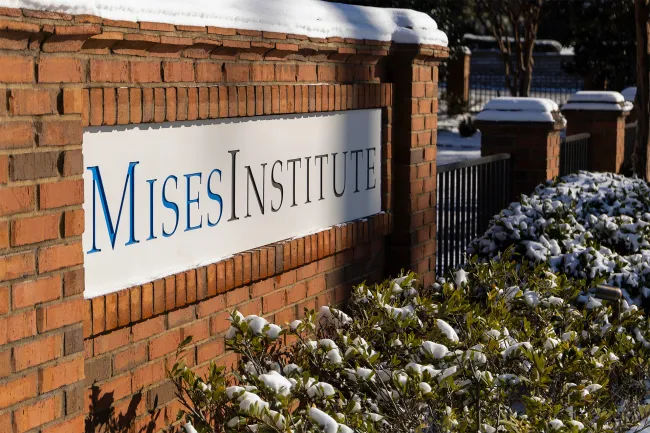The Trump administration has found itself in a dispute with Harvard University. It began when the President’s team sent several Ivy League universities a list of changes they expected the schools to make.
The move is part of a new right-wing strategy which recognizes that we currently live under a vague, necessarily politicized system of civil rights law and aims to begin interpreting civil rights laws in ways more in line with the values and social aims of the right.
By threatening to withhold federal funds, the administration was able to get schools like Columbia University to agree to enact changes like banning masks, granting campus police more powers, and appointing an administrator to oversee the Middle East Studies Department with the authority to crack down on rhetoric about Israel that the administration considers antisemitic.
Harvard, however, refused to abide by the administration’s demands. As a result, Trump froze a little over $2 billion in federal funds going to the school last week and announced plans to freeze an additional $1 billion earlier this week—all while threatening to withhold all $9 billion the Ivy League school receives from the federal government each year if they refuse to agree to the President’s demands.
The showdown is largely being framed as either a battle to protect academic freedom from an authoritarian president or an overdue effort to rescue one of the nation’s oldest universities from the radical far-left administrators leading it off course.
But as politicians, pundits, and university officials battle over which characterization is accurate and, therefore, what ought to happen next, few are paying any attention to one of the more outrageous details that this dispute has brought attention to: that taxpayers are being forced to send $9 billion a year to one of the wealthiest colleges in the world.
The $9 billion figure comes from several federal programs—including education initiatives, student aid, research grants, student loan guarantees, and funding for the university’s affiliated hospitals. Much of this funding is composed of multi-year grants and contracts, but the annual figure does, indeed, tend to land around $9 billion.
And that’s just Harvard. Zoom out, and you’ll find that those same federal programs are forcing the over-taxed, heavily-indebted, inflation-rattled American public to send well over $100 billion to colleges and universities every single year.
Conservatives and free-market advocates are right to point out whenever the topic of student debt forgiveness is brought up that such a program is, in effect, a wealth transfer from poorer, working-class Americans without college degrees to their better-off, frequently white-collar, college-educated counterparts. But the same is true for all programs that transfer tax dollars to colleges and universities.
Beyond being blatantly unjust, the federal money pouring into higher education is the main factor behind the exploding cost of college in recent decades. In the name of making college more affordable, the federal government effectively took over the student loan market in the US and—primarily by extending government loan guarantees—expanded the level of lending far beyond what private lenders were willing to provide.
That created significantly more demand for college, which jacked up the price. Then, the artificially high prices forced even more students to turn to loans to afford school, which required more government loan guarantees, which made prices even higher, meaning more loans were needed, and on and on. All the while, the government has started and expanded direct federal spending programs on education that have only fueled the affordability death spiral.
This has been terrible for every non-wealthy student or family straining to pay for a college degree, and all the people who could not afford to go to college at all who are still forced to fund all the government subsidies causing this mess. But, it’s important to understand, this setup has been great for the universities who have gotten to enjoy filling their campuses with cartoonishly lavish buildings and resort-level accommodations, while bloating their administrations with diversity officers, sustainability directors, and other ideological positions.
It has also been great for the politicians and government bureaucrats who have gained leverage over the schools educating the next generation and the scholars and intellectuals currently researching topics relevant to those running our federal government.
In other words, federal higher education policy is best understood as one big government-run scam that’s enriching and empowering a small group of ideological administrators and bureaucrats at our expense. It is, in that way, no different from the healthcare system—through which schools like Harvard are also receiving money through their hospitals.
That is the big unspoken truth at the core of this debate about what the Trump administration is doing with Harvard. A president like Trump can exert control over the internal policies of these universities because of how unnecessarily reliant they are on government money. And widespread pushing of highly unpopular progressive dogmas in classrooms and professional scholarship can only happen at this large a scale because of how—and how much—higher ed and academia are subsidized in modern America.
There is only one genuine and permanent solution to these problems. Halt all federal funding—direct and indirect—for these “private” colleges and universities.
As long as these schools rely on politicians to fund their operations, they will always be politicized. There is no escaping that. And, on the other side, even if Trump is totally victorious and gets Harvard to capitulate on everything, there is functionally nothing stopping the next Democrat to win the presidency from reversing everything Trump did.
Education and genuine scholarship are too important to entrust to the whims of politicians and government bureaucrats. Research and scholarship that is actually valuable does not require forcing people to fund it against their will. And the American people cannot afford to keep sending a significant portion of their money to the well-off and well-connected. These problems are extensive, but the solution is straightforward: stop forcing us to fund these universities.


